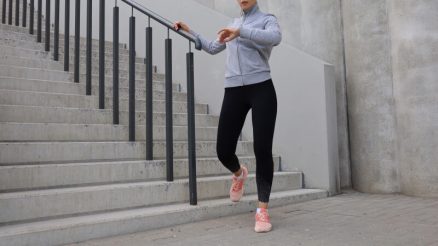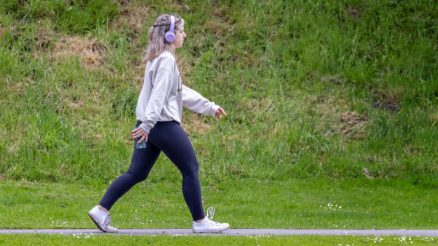Walking is one of the simplest yet most effective forms of exercise, offering a myriad of physical and mental health benefits. But when it comes to lacing up your shoes and heading out, a fundamental question often arises: should you hit the rugged trails or pound the city pavements? Both trail walking and urban walking offer unique experiences and advantages. Let’s delve into a detailed comparison to help you decide which is better suited for your lifestyle and goals.
The Call of the Wild: Trail Walking
Trail walking, often synonymous with hiking, involves traversing unpaved paths through natural environments like forests, mountains, and coastal areas. It’s an immersive experience that connects you directly with nature.
Pros of Trail Walking:
- Enhanced Physical Challenge: Uneven terrain, inclines, and declines engage a wider range of muscles, including stabilizers in your ankles and core, leading to a more comprehensive workout. You’ll often burn more calories due to the varied effort required.
- Mental Rejuvenation: Spending time in nature, often referred to as “forest bathing,” has been scientifically proven to reduce stress, lower blood pressure, improve mood, and decrease feelings of anxiety and depression. The quiet, natural sounds are a stark contrast to urban noise.
- Sensory Engagement: The sights of lush greenery, the sounds of birdsong, the smell of damp earth, and the feel of the breeze create a rich sensory experience that can be incredibly grounding and invigorating.
- Improved Balance and Agility: Navigating roots, rocks, and muddy patches hones your balance and coordination skills, making you more agile.
- Exploration and Adventure: Trails often lead to breathtaking viewpoints, hidden waterfalls, or unique geological formations, offering a sense of discovery and adventure with each outing.
- Reduced Impact (on some surfaces): Softer surfaces like dirt or grass can be gentler on your joints compared to hard concrete or asphalt, especially for longer walks.
Cons of Trail Walking:
- Accessibility and Time Commitment: Trails are often located outside city centers, requiring travel time. This can make spontaneous walks difficult.
- Weather Dependency: Rain, snow, or extreme heat can significantly impact trail conditions and safety, making some days unsuitable for walking.
- Gear Requirements: You might need specialized footwear (hiking boots), appropriate clothing layers, water, and navigation tools, especially for longer or more challenging trails.
- Safety Concerns: Risks include getting lost, encountering wildlife, slips and falls on challenging terrain, or adverse weather conditions. It’s often recommended to walk with a companion.
- Limited Amenities: Access to restrooms, water fountains, or food options is usually non-existent on trails.
The Pulse of the City: Urban Walking
Urban walking involves strolling through developed areas, including city streets, parks, sidewalks, and designated pedestrian zones. It’s a convenient and often social way to stay active.
Pros of Urban Walking:
- Convenience and Accessibility: Urban environments are designed for pedestrians. You can often step out your door and immediately begin your walk, integrating it easily into your daily routine (e.g., walking to work, errands).
- Social Interaction: City streets are bustling with people, offering opportunities for people-watching, chance encounters, or walking with friends to a café or shop.
- Amenities Galore: Restrooms, water fountains, cafes, shops, and public transport are readily available, making longer walks more comfortable and flexible.
- Flat and Predictable Surfaces: Paved sidewalks and roads provide a consistent, predictable surface, reducing the risk of tripping and making it suitable for all fitness levels.
- Cultural and Architectural Exploration: Urban walks allow you to discover local architecture, street art, historical landmarks, and the unique vibe of different neighborhoods.
- Safety (Generally): Well-lit streets and the presence of other people can offer a sense of security, especially during evening walks.
Cons of Urban Walking:
- Monotony: Walking the same streets repeatedly can become monotonous. The scenery might be less varied than natural trails.
- Harder on Joints: The constant impact on hard surfaces like concrete and asphalt can be tougher on your knees, hips, and ankles over time.
- Air and Noise Pollution: Exposure to vehicle exhaust and constant city noise can detract from the experience and potentially impact health.
- Traffic and Obstacles: Navigating busy intersections, crowds, and street obstacles (e.g., construction, uneven pavements) requires constant vigilance.
- Less Mental Escape: While still beneficial, the constant stimulation of an urban environment might not offer the same level of mental calm and escape as nature.
Which is Better? It Depends on You!
There’s no single “better” option; the ideal choice depends entirely on your personal preferences, fitness goals, and what you seek from your walking experience.
- Choose Trail Walking if: You crave adventure, seek a deeper connection with nature, want a more challenging workout, prioritize mental well-being through natural immersion, and don’t mind planning and preparing for your outings.
- Choose Urban Walking if: You value convenience, want to easily integrate walking into your daily routine, enjoy social interaction or people-watching, prefer predictable surfaces, or want to explore the cultural fabric of a city.
Many people find a balance, incorporating both types of walking into their routine. Urban walks can be excellent for daily fitness and errands, while trail walks can be reserved for weekends or dedicated “escape” days.
Conclusion
Whether you prefer the serene solitude of a forest trail or the vibrant energy of city streets, walking remains an incredibly beneficial activity. Both trail walking and urban walking offer distinct advantages and minor drawbacks. The best approach is often to listen to your body, assess your mood, and choose the environment that best serves your needs on any given day. So, go ahead, pick your path, and enjoy the journey!








